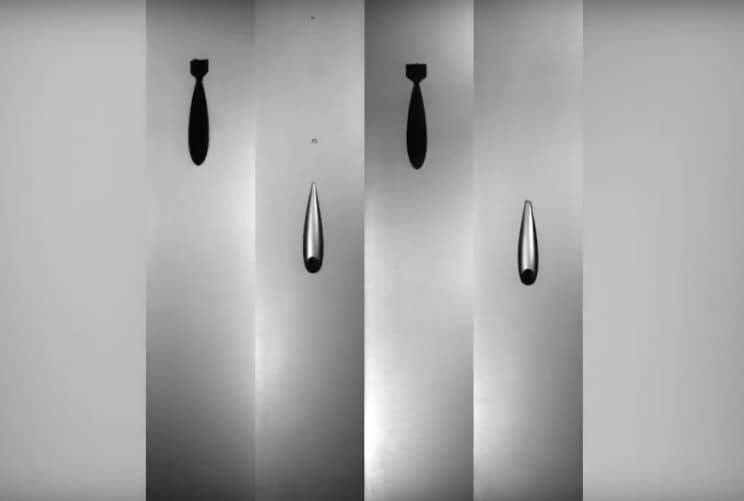When you go down in the depths of water, or high in the skies, drag is that one thing that affects you the most. Swimmers learn to fight the drag in the water, ships are designed to reduce it, and fish evolve to deal with it. Even the tiniest of things like exposed hair on the body adds on to the drag. If the design is improved to reduce drag even by as much as 3 to 5 percent, its efficiency is increased.
A research team from the University of Melbourne, King Abdullah University of Science and Technology in Saudi Arabia, and the Institute of High-Performance Computing in Singapore came together to develop a way of reducing drag by 1000 percent after years and years of research. The findings were published in the journal Science Advances.
The team created a simple setup and dropped a 2-centimeter wide metal ball into the water that created a gas bubble around it and sank along with it to the bottom. The team found out that the ball experienced 10 times less drag than any other object of the same shape. The study was led by Derek Chan, a mathematician at the University of Melbourne, who explained,
“There are two ways we can create these gas layers. The first is to heat a metal sphere to a very high temperature, and the second is to use a superhydrophobic [incredibly averse to water] surface.”
“For the first, we heat the ball to 400 degrees Celsius, and we heat the water to 95 degrees Celsius – just below its boiling point,” Chan described further. “When the ball hits the water it boils a small amount of water immediately around it, creating a layer of water vapor. At the right combination of ball and water temperatures this layer becomes stable, so the ball is completely encased in the gas. We call this a Leidenfrost state.”
The other way was by using hydrophilic surfaces, so the team tried out that as well because it works at room temperature and saves the energy required for heating in the former process. The ball was coated with Glaco Mirror Coat Zero, a kind of spray-on water repellent coating for side mirrors on cars. The hydrophilic nature of the substance is so good that the layer of gas between this and the water remains, even when it is fully drowned in water.
The researchers say that there are other ways of reducing the drag, “Dimples on golf balls is one example, as is the pattern on a shark’s skin.” While the team easily managed to reduce drag by 10 to 20 percent, it just was not enough. They began to find ways of creating a thicker gas bubble by dropping balls from different heights. The team was thrilled to make d’Alembert’s Paradox; convert a purely theoretical concept into reality.
Dr. Klaseboer of Institute of High-Performance Computing explained,
“In the study of fluid dynamics, we’ve always used a hypothetical sphere because we haven’t been able to create an object with a free-slip surface – until now. The motion of balls, like the aforementioned golf ball, is impossible to predict with a mathematical formula because of the chaotic action of turbulence, but the sphere-in-cavity has no turbulence and can be described by very simple equations. It could become a textbook example of some fundamental hydrodynamic theories.”
The creation of the slip-free object is a breakthrough that will prove beneficial in the design of energy efficient marine vehicles. Perhaps, even competitive swimming will have a different meaning for us in the future.

